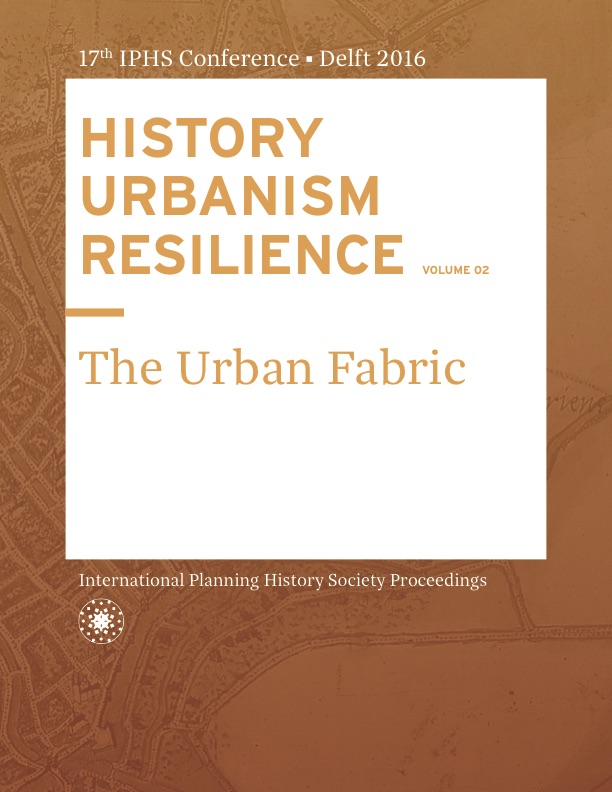Cities under Siege: Flood in 1931 and Environmental Challenges of Chinese Urban Modernization
DOI:
https://doi.org/10.7480/iphs.2016.2.1225Abstract
The paper explores the connection between China’s urban modernization and the resulted environmental vulnerabilities revealed in the 1931 flood. The flood in 1931 is believed to be the deadliest disaster in 20th century China with one-fourth of China’s population affected. The paper challenges the conventional view that the flood was an “unavoidable” natural disaster mainly caused by bad weather conditions (namely heavy rain, a historic high water level, and low-lying ground of the Jianghan plain). The explanation does not address why key urban centers along the Yangzi appeared unusually vulnerable and suffered great loss in the flood of 1931.The paper takes the worst affected urban region in 1931—Wuchang, Hankou and Hanyang as focus of the study. Flood prevention was historically important to the three riverine cities. In traditional China the walled cities with designed hydraulic schemes often provided shelters for people from rural hinterland during the time of flooding. However the three cities were only found defenseless in 1931 after experiencing the rapid urban modernization since the late 19th century. The study specifically examines the urban reconstruction efforts made in the Qing and the Republic and their impacts on the urban flood protection prior to 1931. It explores how the shifting focus of the government from agriculture to trade prioritized urban developmental pattern incompatible with the traditional water-control design. For instance, the rapid urban sprawl since the late Qing caused the reclamation of wetlands and lakes outside city walls preserved as high-water discharge zone. The dismantling of the flood-resistant city walls, locks and moat seriously weakened the traditional urban drains system. In addition, the birth of “the developmental state” in the Republic era marked a new chapter of the Chinese centralized urban modernization with technocratic confidence and industrial ambition. After 1927 the urban social reform reflected a drastic rupture in the government’s policy and societal practice in water control. The concentration of power on the revolutionary government in the cities resulted in the decline of local organizations used to assume water control responsibility at the community level. They were replaced by centrally appointed modernist urban planners who were often ignorant about local condition and traditional wisdom and practice of water control.
References
Feng, Bing 冯冰. “shuitang shiqi chengshi paishui xitong jiangou jiqi dangdai jiazhi” 隋唐时期城市排水系统建构及其当代价值 (The structure of urban water control system in the Sui and Tang dynasties and its value). Lanzhou xuekan 兰州学刊2 (2015): 66-71.
Hankou Municipal Government, ed. Hankou shi zhengfu jianshe gaikuang 汉口市政府建设概况 (The outline of the urban construction by Hankou municipal government). Hankou: Hankou Municipal Government, 1930.
Hu, Zuhe胡祖翮. Jinchu xiushu zhiyao 荆楚修疏指要 (The key principles in water control and dike construction in jing and chu regions). Wuhan Shi: Hubei ren min chu ban she, 1999.
Hubei Archive, ed. Hubei sheng 1931 shuizai dang’an xuanbian 湖北省一九三一年水灾档案选编 (Selective archives on the flood of 1931 in Hubei). Hubei: Hubei dangan guan, 1999.
Hubei provincial government, ed. Hubei zhengfu gongbao湖北政府公报 (Hubei government gazette). Hubei, 1926.
Li, Wenhai李文海. zhongguo jindai shida huangzai中国近代十大灾荒 (The ten major disasters in modern China). Shanghai: shanghai chuban she, 1994.
Möllendorff, Paul Georg von and Li, Ce. jindai wuhan jingji yu shehui: haiguan shinian近代武汉经济与社会: 海关十年 (Economy and Society of Wuhan). Hongkong: Tianma tushu, 1993.
Pi, Minxiu皮明休. Hankou Wubai nian 汉口五百年 (A five-hundred-year history of Hankou). Hubei jiaoyu chuban she, 1999.
_______________. Wuhan tongshi武汉通史 (General history of Wuhan). Wuhan: Wuhan chuban she, 2006.
Pu, Shigu濮世谷, “Wuchang chengqu hutang zhi yanbian” 武昌城区湖塘之演变 (The Changes of lakes and wetlands in the city of Wuchang), Wuhan wenshi ziliao武汉文史资料 no.4 (1994): 11-17.
Wang, Baoxin王葆心. Xu Hankou Congtan 續汉口丛谈 (Added collected writings on Hankou). Hubei: Hubei jiaoyu chuban she, 2002.
Rowe, William. Hankow: Commerce and Society in a Chinese City, 1796-1889. Stanford University Press, 1984.
Wuhan weishi xuexi weiyun hui, ed. Wuhan wenshi ziliao wenku 武汉文史资料文库 (Wuhan’s historical data collection). Wuhan: wuhan chuban she, 1999.
Wu, Qingzhou (吴庆洲). Zhongguo gudai chengshi fanghong yanjiu 中国古代城市防洪研究 (The study on urban flood prevention in ancient China). Beijing: zhongguo jianzhu gongye chuban she, 1995
Xie, Qianmao谢倩茂. 1931Hankou dashui ji 1931 汉口大水记 (A memoir of the flood in 1931 Hankou): Jianghan yin shu guan, 1931.
Yin, Lingling尹琳琳. Mingqing lianghu pingyuan de huanjing bianqian yu shehui yingdui明清两湖平原的环境变迁与社会应对 (The environmental change of Plain of Hubei and societal responses). Shanghai: Shanghai ren min chu ban she, 2008.
_________________. “cong mingdai hebo suo de zhifei kan hupo fenbu ji yanbian”从明代河伯所的置废看湖泊分布及演变—以江汉平原为例 (The distribution and evolution of lakes in Jianghan plain and its relation to the rise and fall of water control bureaus). Journal of Lake Sciences (2000): 27-39.
Yu, Changlie俞昌烈. Chubei shuili difang jiyao 楚北水利堤防纪要 (Summary of water conservancy and dike construction in north Hubei). Wuhan Shi: Hubei ren min chu ban she, 1999.
Yuan, Weipeng袁为鹏. “Sheng Xuanhuai yu hanyang tiechang zhi zai buju” 盛宣怀与汉阳铁厂(汉冶萍公司)之再布局 (Sheng Xuanhuai and the re-arrangement of the Hanyang Iron Works). zhongguo jingji shi yanjiu 中国经济史研究4 (2004):124-127.
Zhang, Zhidong张之洞. Zhang Zhidong quanji 张之洞全集 (The complete collection of Zhang Zhidong’s writings). Shijiazhuangshi: Heibei renmin chuban she, 1998.
___________________. Zhang Wenxiang gong quanji 张文襄公全集 (The complete collection of Zhang Zhidong). Taibei: Wenhai chubanshe, 1963.
Zhu, Zhixian朱志先. “1931nian Hankou shuizai shulun” 1931年汉口水灾述论 (The discussion on Hankou’s flood in 1931). Journal of Wuhan University of Science and Technology 16, no.1 (2014): 104-111.

